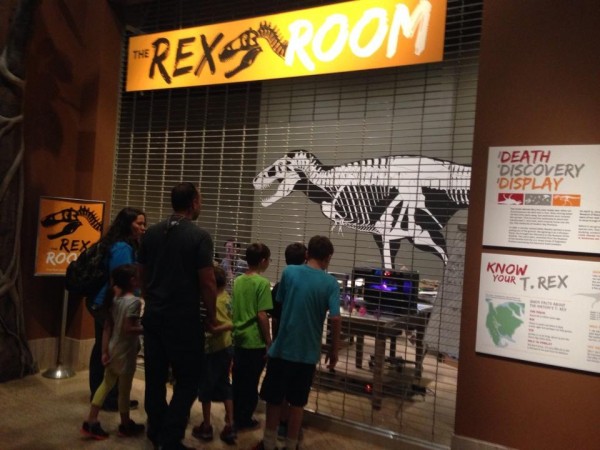When you visit the Smithsonian’s National Museum of Natural History, you might think to yourself “Did a meteor strike? Because all the dinosaurs are gone again.”
The museum closed their Fossil Hall on April 28. Employees will spend the next five years modernizing the exhibits to reflect discoveries made over the last 30 years. According to the museum’s website, the revamped wing will replace their Tyrannosaurus rex skeleton replica with a nearly complete fossil.

“Our goal is to bring a really great, really cool fossil hall out to the public,” Smithsonian employee Amy Bolton said. “The second part of it is that we are conserving the fossils that are on display.”
Smithsonian has not altered this part of the museum since the days of neon and cabbage patch dolls of the 80’s, but the world of paleontology has changed drastically since then. According to the Smithsonian News Desk, the aim of the renovation is to portray what scientists have recently discovered.
“The renovation will pick up on the new information that’s been coming in on scientific research,” said Pyle science teacher Margy Hall, who has been taking her sixth graders to the museum for years. “I wish we knew it all, but we don’t and we are continuing to learn, so the exhibit will be better.”
The new complete Tyrannosaurus rex fossil is on loan from the U.S. Army Corps of Engineers for 50 years, and the museum’s website says it will be the main attraction of the revitalized hall.
Renovations will be done in a three-part plan. The removal of fossils, which began in April, is the first step and will last 18 months. After that, redesigning the room will last two years. It will then take another 18 months to bring the fossils back before visitors can see the highly anticipated ancient relics.
Smithsonian officials stress that the closing of the exhibition is essential for construction.
“It’s such a big project in terms of modernizing the infrastructure and in terms of conserving the fossils, that there’s really no way to do that without closing the whole thing,” Bolton said. “Some of the specimens are really really big, like the Diplodocus. You’d have to close the entire space just to get that dinosaur out.”
Despite the necessity for remodeling, some have expressed their concern of how the absence of this wing could prevent young dinosaur lovers from viewing these extraordinary million-year-old fossils.
“The dinosaur exhibit has always been a really big part of my childhood, and my family always went down there whenever we weren’t doing anything,” sophomore Gennie Anderson said.
However, dinosaur enthusiasts will still have opportunities to see their fossilized friends during the next five years. The ‘Rex Room,’ which opened April 15, allows visitors to watch scientists catalogue a 66 million-year-old Tyrannosaurus rex. In addition, ‘The Last American Dinosaurs: Discovering a Lost World,’ the Smithsonian’s interim fossil exhibit, will open in November 2014. According to the Smithsonian’s newsdesk website, this exhibit will display a Triceratops, as well as a number of other fossils, and will focus on depicting the days immediately before dinosaurs became extinct.
“People should be ready to get involved with other things the museum is doing around fossils,” Bolton said. “There’s no need to wait until then. We’re going to have a lot of great ways to participate and to have fun with fossils.”








